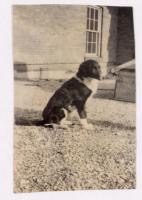On July 30th, 1921 Dr. Frederick Banting and his lab assistant, Charles Best, observed the first positive results from their diabetes experiments on laboratory dogs. They injected their experimental compound, produced from a dog’s pancreas, into a diabetic dog and watched the dog’s blood sugar go down. No one had done this before.
At that time, diabetes was a death sentence. All diabetics died; but Banting’s experiments were about to change this in a spectacular way.
After their initial success with their anti-diabetic compound, which they called Isletin, Banting and Best continued their research. While they could keep their dogs alive, their precious Isletin (later renamed Insulin) was in short supply.
Fred Banting was tormented by the need to sacrifice dogs to obtain Isletin for further research. One problem with this method was the difficulty in isolating the hormone Isletin from destructive digestive juices.
On a late night walk past a local abattoir, Banting came up with another idea. Based on his farm background he was aware that farmers, at the time, marketed their stock when their cattle were pregnant. This increased their weight and hence yielded more profit. The fetus of an unborn calf contains a pancreas (sweetbreads) which has never been used to digest food. Therefore the problem of digestive juices destroying Isletin, might be overcome. Fetal calf pancreas might provide an abundant source of Isletin to inject into the diabetic dogs.
The next day Banting went back to the abattoir and carefully collected a quantity of fetal calf pancreas. Back in the lab Best and Banting were able to make a new extract from this source… indeed, lots of it. This would keep their diabetic dogs alive.
But how long would this substance work?
They decided to conduct a longevity experiment. They removed the pancreas from their most famous dog, on November 18, 1921. This was dog number 33, whom they called Marjorie. She was part border collie. Without a pancreas she immediately became diabetic. On December 6, Fred Banting and Charles Best began treating Marjorie with Isletin isolated from fetal calf pancreas. Within an hour her urine was sugar-free. The experiment ran for 70 days. During this time Marjorie became a loving and friendly lab pet. She had the run of the lab.
To Banting, this was the proof that Isletin was working. But would it work on humans?
Banting and Best bravely injected each other with Isletin. When they experienced no adverse reactions from this, it signalled that Isletin was ready for full-scale human tests.
But some people doubted the results. Professor J.J.R. Macleod thought that Marjorie still retained part of a working pancreas. Hence a photograph of the dog was taken for the record and, on 27th January 1922, Marjorie was put down. Her autopsy proved she had no pancreas. This provided additional evidence that that Isletin was working.
Substantial trials on human beings were a tremendous success. Thousands of diabetics were literally plucked from their deathbeds. Dr. Banting became Canada’s first Nobel Laureate in Medicine and was knighted, Sir Frederick Banting. Best went on to study medicine and became a doctor.
Insulin continued to be made from beef pancreas for many years. Millions of lives around the world subsequently have been saved by insulin.
Marjorie’s portrait is rendered by Kim Martin, from photographs taken on the roof of the University of Toronto laboratory where she played such an important role in the discovery of insulin.
Marjorie was a special dog. She might be considered the diabetic’s best friend.
